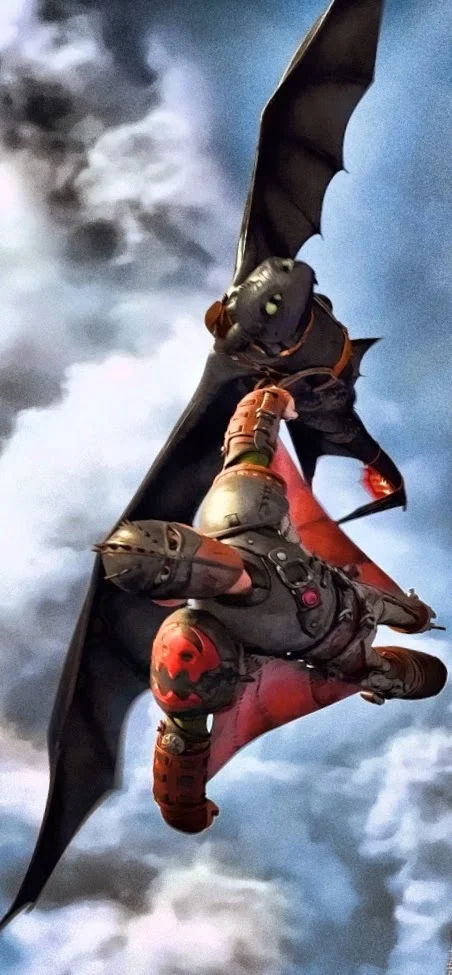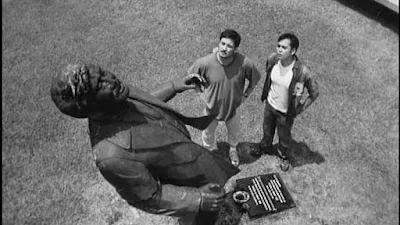How to stroke your critics
Easily the most interesting aspect of Transformers: Age of Extinction is how empthatically it sells itself to the small and relatively unimportant group that was still holding out against its loud and crunchy charms, namely, white middle-aged film critics (or film reviewers; I'd say for purposes of this piece they're considered as an aggregate). So: teenage male ingenue is ejected in favor of Mark Whalberg, who plays barely-working inventor-father with a handful of a nubile teenage daughter (you capture huge swathes of the male demographic right there); better still, Whalberg's character is an inventor (read: tech artisan), and not just an inventor but a soulful connoisseur of obsolete tech (movie projectors, 8-track tape players--seems to me there's nothing in his life that can't be solved by a guest appearance in Pawn Stars.)
Of course there's the usual big explosions and heavy metal roaring about, only less interesting than usual (not that it was interesting in the first place): where a huge part of the movies' appeal was watching various forms of powered transportation turn themselves into overpriced Toys-R-Us merchandise, the updated Decepticons mostly dissolve into undiffrentiated nano clouds, then assemble magically upright (What did I say about championing obsolete technology?). Hong Kong is revisited for the second time in as many years, this time in daylight; course under the bright sun the gigantic digital constructs are as realistic as Action Transfers hastily scribbled onto the big screen.
I've been accused of anti-American bias; I disagree--one of my favorite big-budgeted films last year was directed by an American, born and bred. Silly argument anyway--one should keep one's eyes on talent, period, working outside or inside the Americas, and stay away from hacks no matter how expensively produced.
The ending pretty much action-transfers the ending from the first movie: big dumb armor duke it out while the important job of keeping the McGuffin safe is given to the vulnerable and slow humans, scampering beneath their feet. Much prefer the darker, more cynical and yet somehow more Zen message of the other big-budgeted boxoffice (and American!) success--that nature has a way of correcting itself (with spectacular results), and we'd be smarter to just step out of the way.
Best sequel of the year
Early on the hero is attacked in a prison toilet. Rama (Iko Uwais) stands on one side of an increasingly rickety wood door being brutally battered, held in place by a single shuddering bolt. When the bolt gives the assault is an unstoppable wave Rama meets with a dance of gorgeous ferocity: spinning, whirling, whipping, whacking, limbs delivering a constant salvo of fist, elbow, knee, foot, not to mention the occasional forehead (at one point he tosses an assailant upwards to land astraddle of the stall door, testicles mashed painfully against the door's upper edge). It's a startling sequence director Evans ends with an even more startling punchline: a high-angled crane shot pulling back to reveal the endless stream of convicts waiting outside, ready to enter the tiny stall.
Gareth Evans' The Raid: Redemption (2011) was a bare-bones, no-nonsense movie with the simplest of setups: a police unit stages a raid on an apartment building turned drug den. Not much plot, even less characterization; the real star of the show was the ancient Indonesian martial arts called pencak silat, and Evans' wonderfully retro action choreography / filmmaking. His sequel The Raid 2 (2014) aims to top the original in all respects--you might call that opening toilet riot his jokey take on the first movie's claustrophobic venue, after which this movie breaks out and moves on to bigger, better things.
It's not a total victory; Evans' not coming out of nowhere with a blindsiding roundhouse kick, and his sequel lacks the sinewy leanness of the original, but it is more expansive, and more varied. There's even a fairly interesting story: Rama goes undercover inside the criminal organization of Bangun (Tio Pakusadewo), where he's assigned to protect the gang lord's only begotten son Uco (Arifin Putra). The father-son relationship recalls that of everyone from Henry IV and Prince Hal to Hamlet and his spectral dad; knotty at best, murderous at worst, undeniably spiky entertainment (Bangun you might call the Indonesian equivalent of Vito Corleone, only more irritable; Uco is like a mix of Michael Corleone, Tony Montana and Hamlet, his volatile temper constantly at odds with the complex demands being made on his honor and hubris both).
But we're not here for story or acting are we? On those other terms Evans delivers: Rama sitting in a car, attacked by a swarm of corrupt plainclothes wielding blades; Rama in an outdoor prison riot, grappling in mud; Rama in a hurtling car chase that actually has one gripping one's seat tight--and not with hands, either.
Best of all are the assassins, a motley menagerie--Baseball Bat Boy (Very Tri Yulisman) who has an innocuous way of asking his ball back (which you had better return, if you value your teeth); his sister Hammer Girl (Julie Estelle) who wears a sharp pair of shades and even sharper pair of claw hammers (Apparently a homage to Park Chan Wook's famed hallway hammer fight scene in Oldboy; Evans may not have topped the sequence (shot in a single lengthy take) but does top Park's iconic figure--Hammer Girl is most gorgeous when spattered with gore). Mad Dog (Yayan Ruhian), the awesome arch combatant from the first Raid, makes a return appearance, and isn't the baddest ass of them all, even if he does waste a dance club full of thugs; that honor goes to The Assassin (Cecep Arif Rahman), a rather quiet man whose diminutive stature belies his skill with kerambits (a pair of small particularly deadly serrated scythes).
Rama and The Assassin face off in a spotless white kitchen--marked contrast to the grim grey apartments in The Raid--and don't taunt, or bicker, or drop witty bon mots; fact is the whole movie feels humor deficient, and I'd probably feel overly oppressed by all the seriousness if Evan's gracefully brutal action choreography and complementary filmmaking (a blessed lack of shaky cam and ADHD editing) didn't constitute its own witty commentary on the violence onscreen. The sound effects are particularly effective, a virtual symphony of gasps, grunts and body blows, occasionally punctuated by the thunk! of a head repeatedly hitting ceramic, or steel tubing, or (better yet) sheet metal. Iron Man would have discharged long ago, Captain America knelt and surrendered his shield; for all their powers the X Men never demonstrated this much skill or imagination or sadism when meting out (or enduring) so much punishment. You want real action, watch this; far as I'm concerned it's the thriller of the year.
First published in Businessworld, 6.19.14












.jpg)







